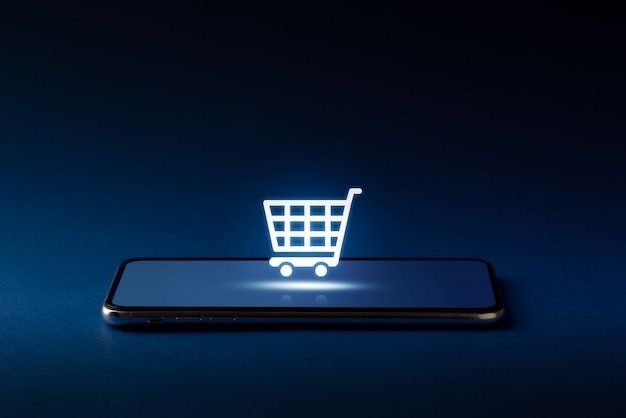Learn how to start drop-shipping in 2025 with a simple, step-by-step guide perfect for beginners entering eCommerce.

What Drop-shipping Really Means in 2025
Starting a business used to mean massive upfront investment, storing inventory, managing logistics, and dealing with the stress of shipping and returns. But drop-shipping flips that old model upside down. You sell products directly to customers, but the items ship straight from your supplier. You don’t buy inventory in advance, and you don’t need a warehouse.
In 2025, this model is more refined and efficient than ever. With better shipping solutions, automated tools, and a maturing eCommerce ecosystem, first-time sellers now have real potential to succeed with drop-shipping if they start smart.
Step 1: Pick a Niche You Actually Understand
Don’t just chase trends. Don’t pick something random because you saw it in a viral TikTok. If you’re serious about success, pick a niche where:
• You understand the customer’s lifestyle or problem.
• You can explain the product benefits clearly.
• You can build content, trust, and long-term value.
Here’s a reality check: selling dog accessories when you’ve never owned a dog? Probably a bad move. But if you’ve always loved tech or skincare or minimal living, those are the markets you can dominate.
Some high-potential niches for 2025:
• Eco-conscious home goods
• Smart workout accessories
• Travel gear for digital nomads
• Tools for creators and remote workers
• Health gadgets for daily wellness
The sweet spot? Something useful, specific, and emotionally engaging.
Step 2: Validate the Market Before You Build Anything
Before setting up your store, test your idea. No one wants to spend weeks building a site that doesn’t convert.
Here’s how to do it:
• Go to Google Trends and search your niche keywords. Check interest over time.
• Browse Reddit, Quora, and Facebook groups. Are people actively talking about products like yours?
• Use TikTok’s search bar. Type in phrases like “best [product] 2025.” What shows up?
• Spy on competitors using SimilarWeb, Koala Inspector, or BuiltWith.
Look at what others are doing. What’s missing? Could you offer a better deal? Better branding? Clearer benefits?
If the demand is there but the competition looks lazy you’ve got a green light.
Step 3: Choose the Right Drop-shipping Supplier
Not all suppliers are created equal. Choosing the wrong one could destroy your brand overnight.
In 2025, these platforms stand out:
• Zendrop – US warehouses, fast fulfillment, branded packaging.
• Spocket – Great for US and EU markets, easy integrations.
• CJ Dropshipping – Broad selection, flexible sourcing, decent delivery times.
• AutoDS – All-in-one automation platform with product imports, tracking, and fulfillment.
Before committing, order a sample product from at least two suppliers. Check quality, packaging, and delivery speed. If it doesn’t impress you, it won’t impress your customer.

Step 4: Build a Store That Looks Legit
Your store is your brand’s first impression. If it looks shady or basic, no one will buy. You don’t need to be a design expert, but the site must feel trustworthy.
Essentials:
1: Clean logo (use Canva or hire a freelancer)
2: Consistent colors and fonts
3: Mobile-friendly layout
4: High-quality product photos
5: Descriptions written like a human, not a catalog
6: Real customer reviews (imported if needed)
7: Clear return policy and contact page
Use Shopify or WooCommerce they both have plug-and-play templates, and everything you need to get started fast.
Your homepage should immediately answer these 3 questions:
1) What do you sell?
2) Who is it for?
3) Why should they trust you?
Step 5: Write Product Descriptions That Actually Sell
Too many drop-shippers just copy-paste descriptions from their supplier. That’s a fast way to lose trust.
A great product description doesn’t just describe it sells the experience.
Instead of:
“Made with high-quality material, waterproof, and durable.”
Try:
“Whether you’re caught in the rain or hiking through rugged trails, this waterproof bag keeps your essentials dry and secure without weighing you down.”
Structure your product pages like this:
• Bold benefit-driven headline
• Short, clear bullet points
• Lifestyle images or videos
• Social proof (reviews, testimonials)
• Guarantee and easy return message
• Urgency triggers (like “Only 7 left in stock”)
People buy with emotion, then justify with logic. Write with that in mind.
Step 6: Launch with Smart Marketing, Not Just Ads
Yes, ads can drive traffic fast. But a smart launch strategy doesn’t just rely on paid clicks.
Start with:
• TikTok Organic: Create 3–4 videos a day showing your product in use. Add voiceovers, real faces, and fun edits. TikTok is still a goldmine.
• Instagram Reels: Repurpose TikToks with catchy captions and trending audio.
• Influencer Gifts: Reach out to 5–10 micro-influencers in your niche. Offer the product free + affiliate commission.
Once you see what’s working, layer in paid ads:
• Meta Ads (Facebook & Instagram) for retargeting
• TikTok Ads for reach and impulse buys
• Google Shopping Ads for people already searching
Always test multiple creatives, and start with small budgets.

Step 7: Set Up Your Back-End for Smooth Scaling
Once orders start coming in, you can’t afford chaos. Automation is key.
Tools to install:
• DSers or AutoDS: One-click order fulfillment
• Klaviyo: Email flows (welcome, cart recovery, post-purchase)
• Loox: Collect and display customer reviews with photos
• Tidio: Live chat and chatbot support
• ReConvert: Upsell pages after checkout
Keep your process tight:
• Orders auto-fulfilled
• Tracking numbers sent automatically
• Emails triggered based on behavior
This frees you up to focus on content, customer support, and scaling.
Step 8: Focus on Customer Experience, Not Just Sales
One bad review can cost you 50 future customers. But one great experience can turn a buyer into a fan.
Make support a priority:
• Respond to emails fast
• Be generous with refunds or replacements
• Follow up after purchase
• Ask for honest feedback
Overdeliver when possible. Add small surprises in the email or packaging. That’s how brands are built.
Step 9: Learn, Improve, Repeat
No one hits a home run on day one. The top stores test, tweak, and optimize nonstop.
What to watch:
• Your best-performing ad and why it works
• Top-selling product and its page layout
• Which emails convert the most
• Where customers are dropping off
Look at your conversion rate, average order value, and customer return rate weekly. Make small changes based on data. Rinse and repeat.
You Don’t Need to Be Perfect You Need to Begin
Success in drop-shipping doesn’t come from having the most beautiful site or perfect strategy. It comes from getting started, learning fast, and staying consistent.
The landscape in 2025 is more competitive but also more filled with opportunity than ever before. People want convenience, speed, and personalization. If your store delivers that with care and confidence, they’ll keep coming back.
So stop waiting for the “perfect time” or perfect product. You don’t need all the answers. You need a starting point and you have it now.
FREQUENTLY ASKED QUESTIONS (FAQs)
1. What is drop-shipping?
It’s a way to sell products online without keeping any inventory. Your supplier ships orders directly to your customer.
2. How do I pick the right products?
Choose items people actually need, in a niche you understand. Avoid random trends go for long-term demand.
3. What’s the best way to build a store?
Start with Shopify. It’s simple, clean, and built for drop-shipping. No tech skills needed.
4. How do I find a good supplier?
Use trusted platforms like Zendrop or Spocket. Always test the product yourself before selling.
5. Can I get sales without paid ads?
Yes. Use TikTok videos, Instagram Reels, and small influencers to build trust and get traffic for free.





